Photo



A Perpetual Spell to Increase Positivity & Luck
This spell is very similar to The Banishing Bin, except it’s purpose is to manifest what is desired, instead of banish what is unwanted.
The manifestation box functions as follows:
write desired wish/outcome/intention on sticky note/paper
draw manifestation sigil over the words
fold up paper and store in manifestation box
burn/rip/recycle them on the waxing crescent or full moon
If you don’t have a manifestation sigil you’re currently working with, you’re welcome to use mine which can be found here.
This is a low spoons spell that is easy to conceal and can be personalized to suit your needs. I’m open about my craft to my family, so I display mine on my favorite altar, but you can just as easily store it in a drawer. You can use anything you like as a box, but I suggest it’s something aesthetically pleasing that you associate manifestation and positivity with. I keep crystals and coins that correspond with luck and happiness inside of mine. You could also decorate both the inside and outside with sigils and magical seals. The possibilities are endless, so make it your own and have fun with it!
2K notes
·
View notes
Text
Metal Correspondence
I realized I’ve not seen anything about this come across my dash, so I thought I’d share my personal correspondences.
Iron: Protection, Strength, banishing
Copper: Intelligence, increasing power or energy, wisdom
Titanium: Protection, Health
Gold: Wealth, Prosperity, Wisdom, Love
Silver: Past life
Aluminum: Air magic, Joy/happiness,
Steel: Protection, Binding,
Brass: Strength, hex, increase of power
Bronze: Psychic ability, Protection or property
Platinum: Wealth, Prosperity,
1K notes
·
View notes
Photo

#MonthOfSpreads Day Twenty-Two: Gratitude With Attitude
If you have been following me for a little while on this blog, you know that I like to keep a gratitude journal. I wasn’t too keen on the idea at first but the more I used it, the more I saw how my life improved as I spent a small portion of my day thinking about the things in my life that I was grateful for. While I know that this won’t be something everyone will use or want to use in their daily life, I ask that you keep an open mind and try to use this Tarot spread just once and maybe look back on it a month or two from now and see what you think. I call this spread Gratitude With Attitude.
Step One:
Shuffle your deck or mix up your divination tool of choice. How many times and however long is completely up to you.
Step Two:
Pull five cards from your deck however you see fit.
Step Three:
Read the spread as follows
1. What can I be grateful for in my life?
2. What in my life am I taking for granted?
3. How can I bring more awareness and appreciation to the people and things in my life?
4. How can I be more grateful for the experiences and lessons I learn throughout my lifetime?
5. How can I easily implement more gratitude into my life today?
Post Notes:
Please do not remove the captions.
Challenge: Month Of Spreads Divination Challenge
Day: Twenty-Two | Gratitude With Attitude
Copyright: © Ivan Ambrose 2017
Navigation: Rules | FAQ | Prizes | Master Post
64 notes
·
View notes
Text
THE SAMHAIN MASTERPOST

HISTORY | TRADITIONS | RITUALS
A Compilation of Original Articles by: ☽Patti Wigington at About Paganism + The Pagan’s Path ☾
The fields are bare, the leaves have fallen from the trees, and the skies are going gray and cold. It is the time of year when the earth has died and gone dormant. Samhain presents us with the opportunity to once more celebrate the cycle of death and rebirth. For many Pagan traditions, Samhain is a time to reconnect with our ancestors, and honor those who have died. This is also the time when the veil between our world and the spirit realm is thin, so it’s the perfect time of year to make contact with the dead.
HISTORY
Samhain(pronounced Sow-en), dates back to the ancient Celts who lived 2,000 years ago. Contrary to what some believe, is not a celebration of a Celtic god of the dead. Instead, it is a Celtic word meaning “summer’s end.” The Celts believed that summer came to an end on October 31st and the New Year began on November 1st with the start of winter. But the Celts also followed a lunar calendar and their celebrations began at sunset the night before. Many today see Halloween as the pagan holiday. But that’s not really accurate. As the pagan holiday of Samhain is on November 1st. But their celebrations did and still do, start at sunset on October 31st, on Samhain Eve.
During the day on October 31st, the fires within the home are extinguished. Often families would engage in a good “fall” cleaning to clear out the old and make way for the new. Starting the winter months with fresh and clean household items. At sunset on October 31, clans or local villages begin the formal ceremonies of Samhain by lighting a giant bonfire. The people would gather around the fire to burn crops and animals as sacrifices to the Celtic deities. It was a method of giving the Gods and Goddesses their share of the previous years herd or crops. In addition these sacred fires were a big part of the cleansing of the old year and a method to prepare for the coming new year.
During the celebration, the Celts wore costumes, and danced around the bonfire. Many of these dances told stories or played out the cycles of life and death or commemorated the cycle of Wheel of Life. These costumes were adorned for three primary reasons. The first was to honor the dead who were allowed to rise from the Otherworld. The Celts believed that souls were set free from the land of the dead during the eve of Samhain. Those that had been trapped in the bodies of animals were released by the Lord of the Dead and sent to their new incarnations. The wearing of these costumes signified the release of these souls into the physical world. Not all of these souls were honored and respected. Some were also feared as they would return to the physical world and destroy crops, hide livestock or ‘haunt’ the living who may have done them wrong. The second reason for these traditional costumes was to hide from these malevolent spirits to escape their trickery. The final representation was a method to honor the Celtic Gods and Goddesses of the harvest, fields and flocks. Giving thanks and homage to those deities who assisted the village or clan through the trials and tribulations of the previous year, and to ask for their favor during the coming year and the harsh winter months that were approaching.
In addition to celebrations and dance, it was believed that this thin veil between the physical world and the Otherworld provided extra energy for communications between the living and the dead. With these communications, Druid Priests, and Celtic Shamans would attempted to tell the fortunes of individual people through a variety of methods. For a people entirely dependent on the volatile natural world, these prophecies were an important source of comfort and direction during the long, dark winter. These psychic readings would be conducted with a variety of divination tools. Such as throwing bones, or casting the Celtic Ogham. There is some historical evidence that additional tools of divination were also used. Most of this comes from writings recorded by Roman invaders, but there are stories of reading tea leaves, rocks and twigs, and even simple spiritual communications that today we’d call Channeling. Some historians have suggested that these early people were the first to use tiles made from wood and painted with various images which were the precursor to Tarot Cards. There’s no real evidence to support this, but the ‘story’ of these tiles has lingered for centuries.
When the community celebration was over, each family would take a torch or burning ember from the sacred bonfire and return to their own home. The home fires that has been extinguished during the day were re-lit by the flame of the sacred bonfire to help protect the dwelling and its inhabitants during the coming winter. These fires were kept burning night and day during the next several months. It was believed that if a home lost its fire, tragedy and troubles would soon follow. With the hearth fires lit, the families would place food and drink outside their doors. This was done to appease the roaming spirits who might play tricks on the family.
The Romans began to conquer the Celtic territories. By A.D. 43 they had succeeded in claiming the majority of the Celtic lands. They ruled for approximately four hundred years combining or influencing many Celtic traditional celebrations with their own. Two Roman holidays were merged with Samhain: Feralia, a day in late October when the Romans traditionally commemorated the passing of the dead and Pomona’s Day of Honoring, the Roman goddess of fruit and trees. The symbol of Pomona is the apple and the incorporation of this celebration into Samhain probably explains the tradition of “bobbing” for apples that is practiced today on Halloween.
Samhain to Halloween
With the coming of Christianity in the 800s AD, the early Church in England tried to Christianize the old Celtic festivals. Pope Boniface IV designated the 1st of November as “All Saints Day,” honoring saints and martyrs. He also decreed October 31 as “All Hallows Eve”, that eventually became Hallow'een. Scholars today widely accept that the Pope was attempting to replace the earlier Celtic pagan festival with a church-sanctioned holiday.
As this Christian holiday spread, the name evolved as well. Also called All-hallows Eve or All-hallowmas (from Middle English Alholowmesse meaning All Saints’ Day). 200 years later, in 1000 AD, the church made November 2 All Souls’ Day, a day to honor the dead. It is celebrated similarly to Samhain, with big bonfires, parades, and dressing up in costumes as saints, angels, and devils. Together, the three celebrations, the eve of All Saints’, All Saints’, and All Souls’ day, are called Hallowmas.
November 1st or May 13th?
Some people confuse Samhain being originally celebrated in May with other pagan and early Christian holidays. Samhain comes from the Gaelic word samain. “Sam” - summer and “fuin” - end. It literally means Summer’s End. The early Irish and Brythonic cultures believed the year was divided in half. The dark half and the light half. Samhain marked the end of the light half and the beginning of the Celtic new year or the dark half.
The confusion of May to November 1st probably comes from the Christians and pagan Roman festivals. The Roman Empire was a pagan culture. During their reign they held many pagan festivals and celebrations, one being the Feast of the Lemures on May 13th.
During this time malevolent and restless spirits of the dead were appeased and festival participants would attempt to gain the favor of the spirits. The feast covered a three day period that honored “all the dead” with food, drink and sacrifice.
At the same time Pope Boniface IV consecrated the Pantheon at Rome to the Blessed Virgin and all the martyrs. This was celebrated in the west from May 13, 609 to 610. Pope Gregory III (731–741), during an oratory in St. Peter’s, moved All Saints Day to November 1st.
This is further confused by the early Irish churches who did not celebrate All Hallows Day in November or May, but rather in early spring on April 20th during the Felire of Oengus and the Martyrology of Talaght. A festival of All Saints was already widely celebrated in the days of Charlemagne in November. But it took a decree at the insistence of Pope Gregory IV to all the bishops, that the celebration be confirmed on November 1st. These early similar celebrations come together around 835AD.
The Roman pagan festival is then overtaken by the early Church and the Irish Church conforms it’s celebrations with Rome. Everyone seems to move their day of the dead to coincide with early Irish pagans and their celebration of Samhain on November 1st. There’s no doubt, however, that the Irish festival of Samhain has always been at the end of summer on November 1st, and has been one of the prominent harvest festivals for Celtic pagans from the past and the present.
Neopagans usually celebrate Samhain on October 31st – November 1st in the Northern Hemisphere and April 30th – May 1st in the Southern Hemisphere, beginning and ending at sundown to coincide with their own seasons. Some Neopagans celebrate it at the astronomical midpoint between the autumn equinox and winter solstice (or the full moon nearest this point).
The Evolution Of Halloween
“Trick-or-treating” is a modern tradition that probably finds it’s roots in the early All Souls’ Day parades in England. During the festivities, poor citizens would beg for food and families would give them pastries called “soul cakes” in return for their promise to pray for the family’s dead relatives. The distribution of soul cakes was encouraged by the church as a way to replace the ancient practice of leaving food and wine for roaming spirits. The practice, which was referred to as “going a-souling” was eventually taken up by children who would visit the houses in their neighborhood and be given ale, food, and money.
“Dressing up” for Halloween gets it roots from dressing up around the sacred bonfire during the original Celtic festival. Some suggest, this practice originates from England, when it was believed that ghosts came back to the earthly world on Halloween. People thought that they would encounter ghosts if they left their homes, so to avoid being recognized people would wear masks after dark so that the ghosts would mistake them for fellow spirits.
In addition, these early English people, would place bowls of food outside their homes to appease the ghosts and prevent them from attempting to enter or cause harm to their homes. A tradition obviously taken from the ancient Celtic pagans.
As Europeans came to America, they brought their varied Halloween traditions with them. Celebration of Halloween in colonial times was much more common in Maryland and the southern colonies. Primarily because Celtic immigrants settled more in these regions than in the north. As the beliefs and customs of different European ethnic groups meshed together a distinctly American version of Halloween began to emerge.
The first celebrations included “play parties,” public events held to celebrate the harvest, where neighbors would share stories of the dead, tell each other’s fortunes, dance, and sing. Colonial Halloween festivities also featured the telling of ghost stories and mischief-making of all kinds. By the middle of the nineteenth century, annual autumn festivities were common, but Halloween was not yet celebrated everywhere in the country.
In the second half of the nineteenth century, America entered an age of mysticism. What was more often termed spiritualism. Metaphysical groups and clubs began to spring up throughout the Golden Age and the wealthier set of Americans. At the same time, America was welcoming a new group of immigrants, especially the millions of Irish fleeing Ireland’s potato famine of 1846.
This new cultural influence brought with it a melding of Irish and English traditions, and a new Americans culture was born. People began to dress up in costumes and go house to house asking for food or money, a practice that eventually became today’s “trick-or-treat” tradition.
Young women believed that, on Halloween, they could divine the name or appearance of their future husband by doing tricks with yarn, apple parings, or mirrors. In the late 1800s, there was a move in America to mold Halloween into a holiday more about community and neighborly get-togethers, than about ghosts, pranks, and witchcraft.
At the turn of the century, Halloween parties for both children and adults became the most common way to celebrate the day. Parties focused on games, foods of the season, and festive costumes. Parents were encouraged by newspapers and community leaders to take anything “frightening” or “grotesque” out of Halloween celebrations. Because of their efforts, Halloween lost most of its superstitious and religious overtones by the beginning of the twentieth century.
By the 1920s and 1930s, Halloween had become a secular, but community-centered holiday, with parades and town-wide parties as the featured entertainment. Despite the best efforts of many schools and communities, vandalism began to plague Halloween celebrations in many communities during this time. By the 1950s, town leaders had successfully limited vandalism and Halloween had evolved into a holiday directed mainly at the young.
Due to the high numbers of young children during the fifties baby boom, parties moved from town civic centers into the classroom or home, where they could be more easily accommodated.
Between 1920 and 1950, the centuries-old practice of trick-or-treating was also revived. Trick-or-treating was a relatively inexpensive way for an entire community to share the Halloween celebration. In theory, families could also prevent tricks being played on them by providing the neighborhood children with small treats.
A new American tradition was born, and it has continued to grow. By the 1990s, Americans have made Halloween one of the largest commercial holidays. Spending an estimated $6.9 billion annually on Halloween costumes, accessories, decorations and pumpkins.
RITUALS AND CEREMONIES TODAY
Depending on your individual spiritual path, there are many different ways you can celebrate Samhain, but typically the focus is on either honoring our ancestors, or the cycle of death and rebirth. This is the time of year when the gardens and fields are brown and dead. The nights are getting longer, there’s a chill in the air, and winter is looming. We may choose to honor our ancestors, celebrating those who have died, and even try to communicate with them. Here are a few rituals you may want to think about trying for Samhain – and remember, any of them can be adapted for either a solitary practitioner or a small group, with just a little planning ahead.
Decorating Your Altar for Samhain
The evening of October 31 is known as Samhain. It’s a time to mark the endless, ongoing cycle of life and death. Here are some ideas for dressing up your home altar. More »
Samhain Prayers
Looking for prayers to celebrate the Pagan sabbat of Samhain? Try some of these, which honor the ancestors and celebrate the end of the harvest and the cycle of life, death and rebirth. More »
Celebrating the Cycle of Life and Death
Samhain is known as the witch’s new year. It is a time to think about the endless cycle of life, death, and rebirth. With this ritual, you can celebrate all three aspects either with a group or as a solitary. More »
Ritual Honoring the Forgotten Dead
As Samhain rolls around and the veil grows thin each year, many people in the Pagan community take the opportunity to hold rituals honoring the dead. However, there’s one group that is typically overlooked at this time of year. It’s the people who passed through the veil with no one to mourn them, no one to remember their names, no loved ones left behind to remember them. Those are the people honored in this ritual. More »
Honoring the God and Goddess at Samhain
In some Wiccan traditions, people choose to honor the God and Goddess, rather than focusing on the harvest aspect of the holiday. If this is something you’d like to do, this ritual welcomes the Goddess in her persona as Crone, and the Horned God of the autumn hunt. More »
Ritual to Honor the Ancestors
For many Wiccans and Pagans, the honoring of the ancestors is a key part of their spirituality. This ceremony can be held by itself or as part of a group of Samhain rituals. More »
Simple Ancestor Rite for Families with Small Children
Are you looking for a simple Samhain ritual you can perform with younger children? This ritual is appropriate for smaller family members, and celebrates the theme of honoring the ancestors at Samhain. More »
Samhain Ancestor Meditation Ritual
It’s Samhain, and that means for many Pagans and Wiccans it’s time to commune with the ancestors. Use this simple meditation technique to call upon those who walked before us – you may be surprised at some of the people you meet! More »
Plan a Samhain Cemetery Celebration
Are you planning a cemetery visit as part of your Samhain celebrations? Here are some tips and ideas for how to plan a Samhain cemetery visit to honor the dead. More »
Samhain Ritual to Honor the Animals
Man’s relationship with animals has evolved over thousands of years. Where once they were only a source of food, now they are our companions. Take a moment to honor the animal spirits in a ritual for Samhain. More »
Ritual to Mark the Harvest’s End
Samhain falls on October 31, and is known as the Witch’s New Year. You can celebrate it as the end of the harvest, and honor the return of the King of Winter. More »
SAMHAIN MAGIC, DIVINATION AND SPIRIT WORK
Samhain is a time to work magic involving the spirit realm, and communicating with the dead. It’s a time to honor the cycle of life and death, as well. Here’s where you’ll find all sorts of information on magical workings that celebrate the Samhain season.
Samhain Divination
In many agricultural cultures, a popular pastime at Samhain was that of divination. From scrying in a mirror to using an apple to foretell the name of one’s future lover, many traditional divination methods were practiced in rural societies for centuries. You can use them today for your own divination at Samhain, or any other time of the year. Learn more about Samhain Divination. More »
How to Hold a Seance
Many Pagans communicate with the spirit world by way of holding seances. Before you have a seance of your own, there are a few things to keep in mind, if you don’t want to have a total disaster on your hands. Read these tips for a successful seance. More »
Host a Dumb Supper
In many Pagan traditions, Samhain is celebrated with a Dumb Supper, or a Feast with the Dead. This is a solemn and sober occasion, and includes place settings for relatives and friends who have crossed over in the past year, as well as a chance to tell them what you never got to say. Here’s how to host a Dumb Supper. More »
Types of Spirit Guides
Think you might have a helpful spirit guide hanging around? Before you go getting too involved, you may want to read this information about what a spirit guide actually is – and what it’s not. Here are four different types of spirit guides. More »
How to Find Your Spirit Guide
It’s important to know how to actually find and identify spirit guides. Let’s dive in and take a look at some of the most popular methods of finding a spirit guide. More »
Spirit Guide Warning Signs
Many people believe they have spirit guides. But what are some of the warning signs you should look for when dealing with otherworldly beings? Here are some spirit guide warning signs to watch out for. More »
Should I Use a Ouija Board?
Want to use a Ouija board for divination, or communing with the spirits? Well, that’s fine… if you know what you’re doing. Before you use one, be sure to read this information on how a Ouija board works, and what potential problems can arise. More »
Ghosts, Poltergeists and Hauntings
Although belief in ghosts, poltergeists, and other entities is not something that is unique to the Pagan religious traditions. Many people - Pagan and otherwise - accept the existence of some sort of spiritual plane, a place where a variety of entities exist beyond the veil. Let’s talk about ghosts, poltergeists and other hauntings. More »
Pagans, Death and the Afterlife
For many modern Pagans, there is a somewhat different philosophy on death and dying than what is seen in the non-Pagan community. While our non-Pagans see death as an ending, some Pagans view it as a beginning of the next phase of our existence. Let’s look at some Pagan perspectives on death and dying, as well as the afterlife. More »
The Samhain Needfire
In some of the Celtic countries, it became tradition to light a “Needfire” at the time of Samhain. Find out what this fire was for, and what was so special about lighting the Needfire. More »
Make a Protective Witch Bottle
In years gone by, people often used “witch bottles” to protect themselves and their homes. But what is a witch bottle… and is it something you can still use? Here’s how to make a witch bottle. More »
TRADITIONS AND TRENDS
Interested in learning about some of the traditions behind the celebrations of the late harvest? Let’s look at some of the customs and folklore behind the Samhain season.
Samhain is Not a God
There’s been a rumor going around for ages that Samhain is the name of a spooky Celtic death god. Totally not the case at all, but let’s take a look at where this misconception originated, and why it’s perpetuated by some groups of evangelical Christians. More »
Jack O'Lanterns
One of the most enduring symbols of Halloween is the jack o'lantern. Carved pumpkins are a mainstay of the Samhain season, and for some folks, the more elaborate the carved design, the better! School children are alternately delighted and terrified by them – but how did the whole idea of carving up a pumpkin evolve in the first place? Let’s talk about the legend of the Jack O'Lantern! More»
Samhain Superstitions
Samhain is a time rich in superstition and spooky stories. From divination to ghost tales, let’s look at some of the best-known superstitions of the Samhain season! More »
Bat Magic and Mythology
In many parts of the world, once the sun begins to set, bats emerge from their resting places and zoom around outdoors, hunting for sustenance. During the Samhain season, in particular, we tend to see an abundance of decorative bats, ranging from cute to scary. Let’s look at how bats became associated with Samhain and Halloween, and at some of the legends and myths surrounding these nocturnal flyers. More »
Black Cat Folklore
Every year when people begin putting out their Halloween decorations, and we start dressing our homes for Samhain, inevitably the image of the black cat comes up. Where did the fear of these beautiful animals come from, and why are they so often seen as unlucky? Learn more about Black Cat Folklore. More »
Cailleach Bheur, the Ruler of Winter
The goddess known as Cailleach in Scotland and parts of Ireland is the embodiment of the dark mother, the harvest goddess, the hag or crone entity. She appears in the late fall, as the earth is dying, and is known as a bringer of storms. Let’s look at the legend of the Cailleach Bheur. More »
Caring for the Dead
Many of today’s contemporary funeral practices might be considered a bit strange by our ancestors. There is such a wide variety of funeral practice throughout history that it’s worth taking a look at - in fact, archaeologists have learned that studying the treatment of the dead can actually give them a clue to how a culture lives. Let’s explore some of the ways that we care for our dead. More »
Deities of Death and the Underworld
Death is rarely so apparent than it as at Samhain. The skies have gone gray, the earth is brittle and cold, and the fields have been picked of the last crops. In cultures all over the world, the spirit of Death has been honored at this time of the year. Here are just a few of the deities who represent death and the dying of the earth. More »
Spider Mythology and Magic
Most spiders are harmless, and people have learned to co-exist with them for thousands of years. Nearly all cultures have some sort of spider mythology, and folktales about these crawly creatures abound! More »
Mexico’s Day of the Dead
Each year in Mexico, and in many Hispanic communities around the United States, people celebrate the Day of the Dead (Dia de los Muertos) between October 31 and November 2. While it may sound a bit macabre, it’s actually a joyful celebration, honoring the memories of those who have died in the past year. Today’s Day of the Dead festivals are a blend of old Aztec tradition merged with modern Catholic beliefs. Let’s look at the customs behind the Day of the Dead. More »
Nut Crack Night
Early divination was often done using only the items at hand – sticks, vegetable peels, cloud formations, etc. Around the end of the harvest season, there wasn’t often much left in the fields. However, nuts were often plentiful. Pecans, chestnuts, filberts and more would have been gathered up in baskets and stored, which made them the perfect medium for late fall divination. Learn more about the tradition of Nut Crack Night. More »
Owl Mythology and Folklore
Owls are known far and wide as symbols of wisdom, omens of death, and bringers of prophecy. In some countries, they are seen as good and wise, in others they are a sign of evil and doom to come. There are numerous species of owls, and each seems to have its own legends and lore. Let’s look at some of the best-known bits of owl folklore and mythology. More »
Pagans and Halloween
One of our readers wants to know if it’s somehow anti-Pagan to celebrate Halloween. After all, if Samhain is supposed to be a spiritual tradition, can we reconcile that with lots of secular silliness and the gobbling of candy? Sure we can! Read more about Pagans and Halloween. More »
Are Green-Skinned Witch Decorations Offensive?
A reader wants to know if she should be offended by the green-skinned witches she sees everywhere at Halloween, or if she’s taking things way too seriously. Let’s talk about green-skinned ugly witch decor, and where the idea came from in the first place. Are green-skinned witch decorations offensive? More »
Tricks or Treats?
While many of us Pagans celebrate the holiday called Samhain, for some of us, it’s also the secular event of Halloween. The tradition of trick-or-treating isn’t quite as old as the holiday itself, but it’s certainly been around for a while. Let’s look at how this unique custom evolved. More »
Are Vampires Part of Wicca?
A reader asks, “I’ve been learning a lot about Wicca and other Pagan religions. I’m really interested in vampires. How come there’s nothing about vampires in all those books you recommend?“ Well, there’s a pretty good reason for that, actually - let’s talk about vampires for a moment. More »
9 Spooky Samhain Poems
Samhain night is a great time to sit around a fire telling spooky stories. Check out this collection of classic scary poems to read, either alone or out loud. All of them are classics worth reading at Samhain! More »
Death and Dying, by Guest Author Ray Buckland
Wiccan author Ray Buckland did a presentation in the town of Lily Dale in Spring 2008 on the topic of death and dying. More »
CRAFTS AND CREATIONS
As Samhain approaches, decorate your home (and/or keep your kids entertained) with these easy craft projects. Start celebrating a bit early with these fun and simple ideas that honor the final harvest, and the cycle of life and death.
5 Easy Samhain Decorations
Magical Samhain Goodie Bags for Pagan Kids
Samhain Spirit Incense
Set up an Ancestor Shrine
Make an Ancestor Altar Cloth
Make a Grave Rubbing
The Samhain Straw Man
Make an Apple Garland
Make a Kitchen Witch Craft Project
Pumpkin Candles
Samhain Skull Garland
FEASTING AND FOOD
No Pagan celebration is really complete without a meal to go along with it. At Samhain, celebrate with foods that celebrate the final harvest, and the death of the fields.
Ghost Poop Dessert
Got a Samhain celebration coming up and you need something spooky for dessert? Wondering what to do with all that extra Halloween candy? Whip up a batch of Ghost Poop! More »
Day of the Dead Sugar Skulls
In Mexico, the Day of the Dead is celebrated around the same time that Pagans observe Samhain. One tradition that’s always popular is to make sugar skulls. Here’s how to make your own sugar skulls and decorate them for your Samhain celebration. More »
Soul Cakes
Soul cakes were traditionally given out on Samhain to anyone who came tapping at the door. This was one of the origins of today’s Halloween trick-or-treating. Make your own soul cakes for your Samhain rituals, using one of our four easy recipes. More »
Roasted Pumpkin Seeds
Pumpkin seeds are a delicious addition to just about any seasonal feast, and at Samhain, the pumpkins are everywhere! When you remove the seeds from your pumpkins (which is all part of carving a Jack-O-Lantern!) you can rinse them off, roast them, and season them with just about any flavor you like. Here are the basics to get you started on roasted pumpkin seeds. More »
Pumpkin Spice Cheesecake
Pumpkins are just about everywhere you look in October. If you’re someone who loves the taste of pumpkin, try making a pumpkin cheesecake to add to your Samhain feast! More »
Butternut Squash Casserole
This butternut squash casserole includes apples, nuts, and golden raisins. It’s warm and comforting, and perfect for an end-of-the-harvest Samhain feast! More»
Savory Pumpkin Soup
Do you love the flavor of pumpkin? Make a batch of savory soup and serve it up to your guests inside the pumpkin shell! It’s a fantastic and fun addition to your Samhain feast! More »
Keep reading
3K notes
·
View notes
Photo

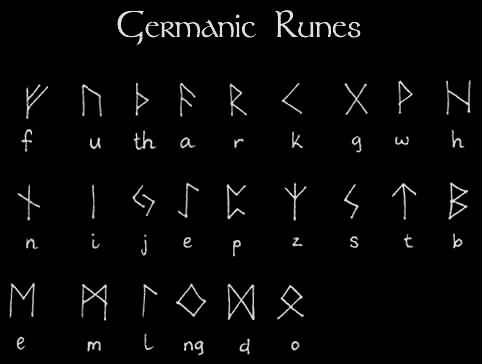


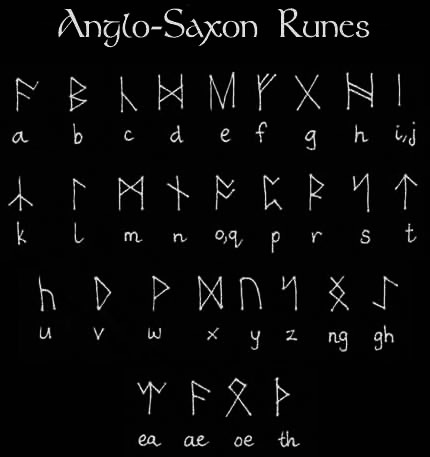





Ancient Alphabets.
Thedan Script - used extensively by Gardnerian Witches
Runic Alphabets - they served for divinatory and ritual purposes, as well as the more practical use; there are three main types of Runes; Germanic, Scandinavian/Norse, and Anglo-Saxon and they each have any number of variations, depending on the region from which they originate
Celtic and Pictish - early Celts and their priests, the Druids, had their own form of alphabet known as “Ogam Bethluisnion”, which was an extremely simple alphabet used more for carving into wood and stone, than for general writing, while Pictish artwork was later adopted by the Celts, especially throughout Ireland
Ceremonial Magick Alphabets - “Passing the River”, “Malachim” and “Celestial” alphabets were used almost exclusively by ceremonial magicians
223K notes
·
View notes
Photo

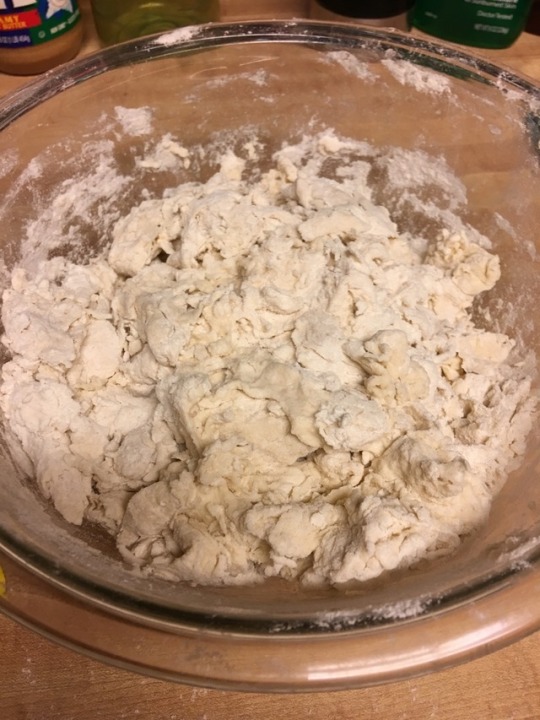
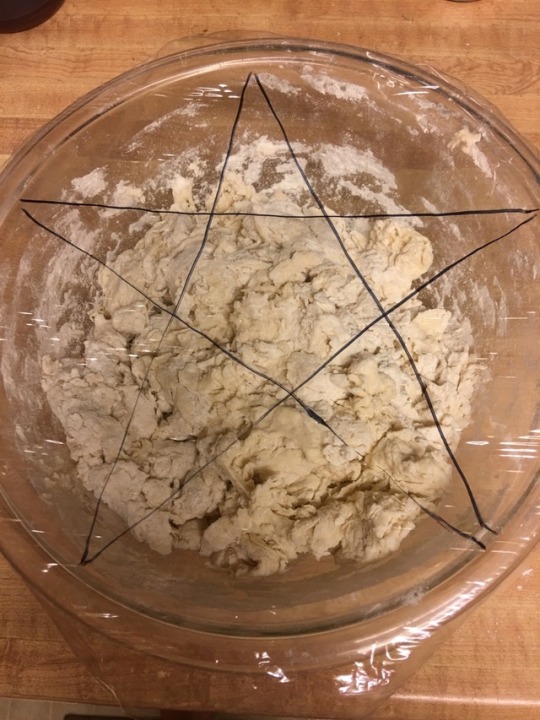


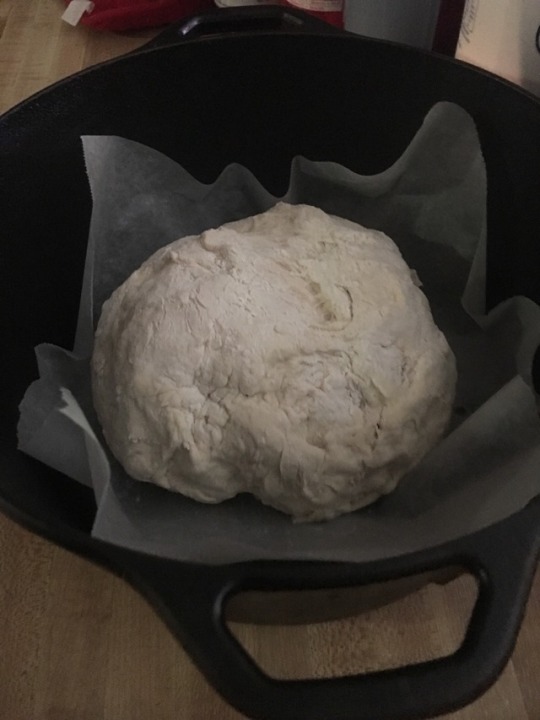



NO-KNEAD CRUSTY ARTISAN BREAD
One of my most reader-tested and approved recipes! This crusty, fluffy artisan bread needs only 4 ingredients and 5 minutes to come together… you won’t believe how easy and delicious it is!
The beautiful, crusty and fluffy bread that results from just four ingredients will knock your socks off! All it takes is flour, salt, yeast and water, all mixed up in a bowl and set to rest for 8-24 hours.
Just make sure your flour is fresh and yeast isn’t expired. I’ve used both active dry yeast and highly active dry yeast with great results!
NO-KNEAD CRUSTY ARTISAN BREAD
YIELD: Makes 1 loaf
INGREDIENTS:
3 cups all-purpose flour
2 teaspoons kosher salt (not table salt)
½ teaspoon dry yeast (active dry or highly active dry work best)
1 ½ cups lukewarm water
Special cookware needed: Dutch oven or any large oven-safe dish/bowl and lid*
DIRECTIONS:
In a large bowl, stir together the flour, salt and yeast. Stir in water using a wooden spoon until the mixture forms a shaggy but cohesive dough. Do not over-work the dough. The less you “work” it, the more soft, fluffy air pockets will form.
Cover bowl tightly with plastic wrap. Let dough sit at room temperature for 8-24 hours*. Dough will bubble up and rise.
After dough is ready, preheat oven to 450 degrees F. Place your Dutch oven, uncovered, into the preheated oven for 30 minutes.
While your Dutch oven preheats, turn dough onto a well-floured surface. With floured hands, form the dough into a ball. Cover dough loosely with plastic wrap and let rest.
After the 30 minutes are up, carefully remove Dutch oven. With floured hands, place the bread dough into it. (You can put a piece of parchment under the dough if your Dutch oven isn’t enamel coated.)
Replace cover and bake for 30 minutes covered. Carefully remove cover and bake for 7-15 minutes* more, uncovered.
Carefully remove bread to a cutting board and slice with a bread knife.
Enjoy!
NOTES
Uncovered baking time depends on your oven. In my oven, the bread only needs 7 minutes uncovered until crusty and golden brown, but this can vary. Just keep an eye on it!
Preheating your Dutch oven to 450 degrees F will not damage it, or the knob on top.
I’ve let this dough rise anywhere between 8-24 hours and it has baked up beautifully. Just make sure it has risen and appears to “bubble” to the surface.
There’s no need to grease the Dutch oven/baking dish/pot. My bread has never stuck to the pot. If you are concerned though, put a piece of parchment paper under your dough before placing into your pot.
I do not recommend using whole wheat flour or white whole wheat flour in this recipe. The resulting bread will be very dense, and not as fluffy and delicious.
I used a 5.5 quart enameled cast iron Le Creuset pot, but you can use any large oven-safe dish and cover. All of these also work: a baking dish covered with aluminum foil, crockpot insert, stainless steel pot with a lid, pizza stone with an oven-safe bowl to cover the bread, and old cast iron Dutch oven.
Add any mix-ins you like - herbs, spices, dried fruit, chopped nuts and cheese all work well. I recommend adding them into the initial flour-yeast mixture to avoid over-working the mix-ins into the dough. The less you “work” it, the more you’re encouraging soft, fluffy air pockets to form!
5K notes
·
View notes
Text
I love that the full moon is when I got to do my first tarot reading for someone else. And it was for my bf, who I've been worried wouldn't be so... understanding/accepting of my witchiness!
#he's so cute he keeps calling me his lil witch in a cute couce#voice* what the heck did i type 😂#reilly's rambles
0 notes
Photo
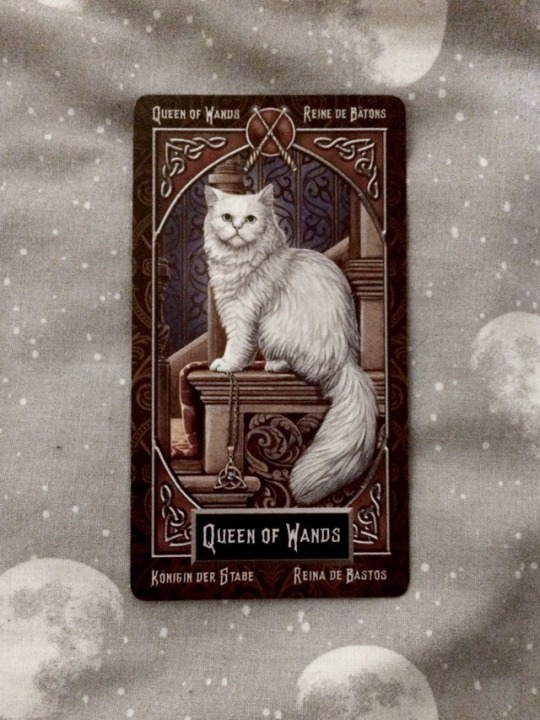
Did my first ever reading for someone else just now! Was shuffling my Tarot Familiars deck by Lisa Parker when my boyfriend asked me to do him one.
🔮Question: What does he need to focus on while playing PUBG? (We’re big gamer nerds aha)
🔮Card: Queen of Wands
🔮Reading: The first thing that struck me was how Gryffindor this card in 😂🦁 It suggested that he be more risk-taking and persevering in his gameplay, but also reminded him to have fun! Very apt as he’d just rage-quit from salt :’)
Anyone have any thoughts? 🥀
#tarot#my readings#on a side note i love how the reverse of my duvet is covered in moons#thereby being perfect for taking witchy aesthetic photos on 😂#its from asda the front has catstronauts on it lmao#as in galaxy patterned cats in space helmets its great
0 notes
Photo

What does this mean
#i was just innocently scrolling tumblr and the moon app decides to send me this notification#i am very confused#reilly's rambles
0 notes
Text
5 Super Easy Tarot Tricks Anyone Can Do

1. For a situation that is not going your way
Find the Wheel of Fortune in your deck, the two cards on either side are the solutions to your problem
2. To bring money to you
Pull out the 1st, 5th, 10th, 20th and 50th card in your deck. These cards will tell you how to bring amounts of money your way.
3. To find the root of a romantic conflict
Find The Lovers. The cards on either side are conflicts surrounding the relationship.
4. To Leave behind sadness
Find The Moon and The Sun. The cards in between them are the order of steps you must take to move forward.
5. To look into your near future
Find your nearest Birth Card, the first card beneath it is what is approaching soonest.
44K notes
·
View notes
Photo






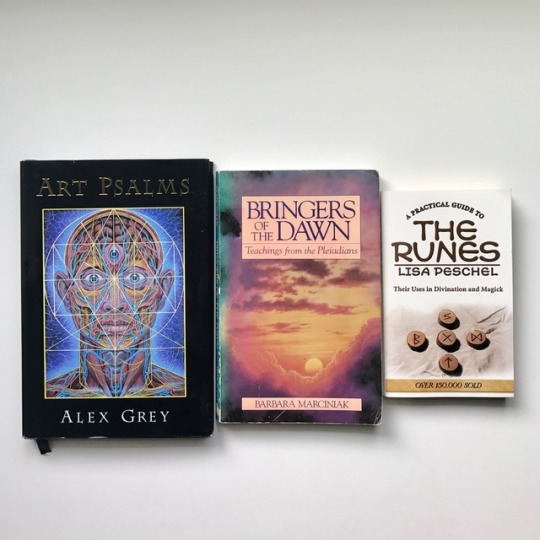
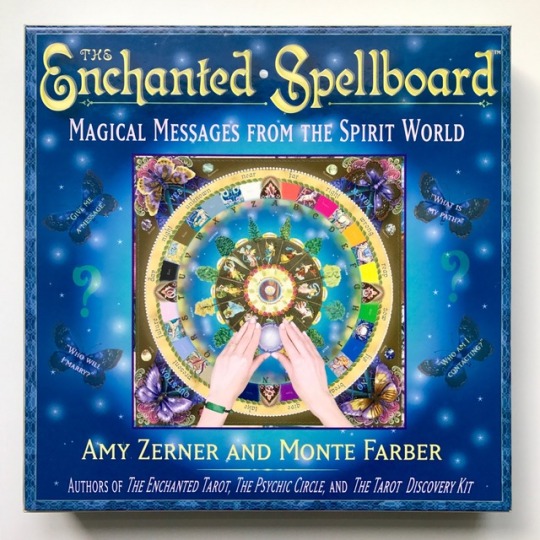

Starborn-Witch’s Eclectic Giveaway
I’m so excited to share my first giveaway with you all! I was going to wait to do this until I re-open my Etsy shop, but I recently hit 6k and wanted to express my gratitude to all the amazing people that support me on this platform ♡ Thank you to each and every one of you!
Participation Rules:
You must be following this blog
You must be 18 years of age or older
Likes are okay to bookmark, but don’t count as entries
Each reblog counts as one entry
Reblog as many times as you like, but please don’t spam!
DO NOT tag this as a giveaway, it will jack everything up
DO NOT reblog this to giveaway blogs, ^^^
If reblogging to a side-blog, put your main in the tags
Must be willing to provide shipping info (confidential)
One winner will be chosen using a random number generator from Random.org and will be contacted via the messaging system. Please be sure that your messaging feature is turned on so I can notify you if you win. This is open to international followers. I will ship anywhere on the globe.
The Prizes:
12pk scented colored pencils
unicorn notepad
holographic seashell journal
oversized unicorn mug
indoor star string lights
vial of lavender
vial of rose petals
vial of mugwort
palo santo stick
sage wand
8 oz pink himalayan salt
10pk rainbow spell candle bundle
LUSH “twilight” bath bomb
Sailor Moon sticker pack
3pk cosmic sequin patches
opalite egg
quartz geode half
medium sized calico pyrite specimen
tigers eye pendant
rose quartz tumbled stone
amethyst tumbled stone
green aventurine tumbled stone
clear quartz point
selenite log
Art Psalms by Alex Grey (hardcover)
Bringers of the Dawn by Barbara Marciniak (vintage)
The Runes by Lisa Peschel (paperback)
The Enchanted Spellboard (spirit board)
25pk organic fair trade green tea
green marble mortar and pestle
6pk essential oil starter kit
This giveaway is not affiliated with Tumblr in any way, shape, or form. The winner will be contacted the day the giveaway ends. You will have 24 hours to respond or another winner will be chosen.
Giveaway ends on Samhain (31 OCT 2017) at 11:11 am PST. Good luck!
(( Revised Participation Rules // 25 Aug 2017 ))
11K notes
·
View notes
Text
🔥✨ Fire in Magick ✨🔥

The element of fire is a special one - it is powerful in its way of taking energy from other elements and giving birth to heat, smoke, and light. It is with fire that we receive warmth and prepare our food, and it is with fire that we fuel our rituals. While fire is destructive in nature, this does not have to be a negative thing in terms of magick - this element is representative of transformation, passion, motivation, and sexuality. A masculine element, the usage of fire in candle magick can help break bad habits and bring about healing. There is nothing quite as powerful as the feelings of both fascination and intimidation while watching the rising and falling of fire’s warm flames.
♡ Fire in Magick ♡
Here is a mini guide to the use of fire and its correspondences in witchcraft practices!
GODDESSES: Pele, Brigit, Vesta.
GODS: Agni, Horus,Vulcan, Hepaetus, Promtheus.
DIRECTION: South.
COLOR: Red.
USAGE IN RITUALS: Passion, courage, force, enthusiasm, lust, determination.
SENSE: Sight.
HERBS: Thistles, seeds, cacti, chili peppers.
STONES: Jasper, quartz, amber, fire agate.
MAGICK TOOLS/OBJECTS: Candle, sword.
♡ The Fire Signs ♡
The fire signs - Aries, Leo, and Sagittarius - live up to their fire-y ruling. These signs have a certain zest for life and an untouchable enthusiasm. When the fire signs are inspired, their creative drive knows no bounds. However, while they are definitely skilled in the area of self-sufficiency and posses naturally lively spirits, it basically goes without saying that the fire signs can find themselves feeling a bit stubborn if they don’t get their way. Their personas may come across as quite forceful in these instances, so it is best not to push them too deep into their assertiveness. That being said, the fire signs are still so good to have around - you won’t meet anyone quite as dedicated to their passion for both romance and living life to its fullest potential.
2K notes
·
View notes
Photo
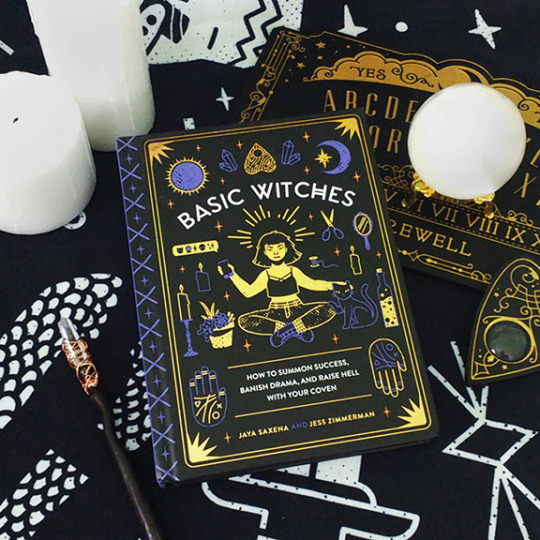
Basic Witches is out now! 🌙🔮🕯️✨
This is the first book I’ve illustrated and I couldn’t have asked for a more perfect fit.💜 Available wherever books are sold.
1K notes
·
View notes
Photo
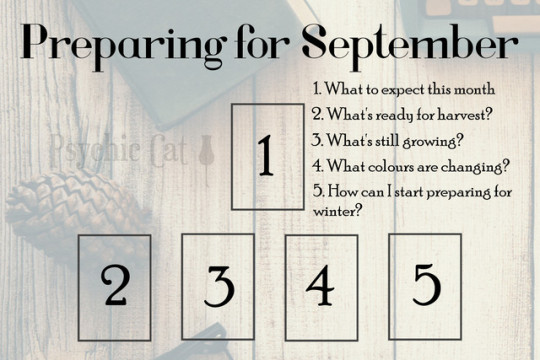
Preparing for September Spread
1. What to expect this month. This card will tell you anything you need to know about this month. Think of it as the general experience you’ll have this September; what’s out of your control and need to be prepared for.
2. What’s ready to harvest? What are you “finished” with? All year you’ve been sowing your seeds. This card will show you which have come to fruition, what you are ready to do.
3. What’s still growing? What still needs some work and attention? This card will show you where you need to continue investing your time, energy, and resources in.
4. What colours are changing? What transition(s) are you currently going through? This card will explore the ways you and your environment are changing and growing right now.
5. How can I start preparing for winter? This card follows up on the previous; how can you prepare for and handle the changes in your life right now? This card will tell you the actions you need to take this September to make your transition into the winter months as smooth and easy as possible.
Get this reading from me for $13.
About Me
Services I Offer
Free Readings
Guidelines
379 notes
·
View notes
Photo
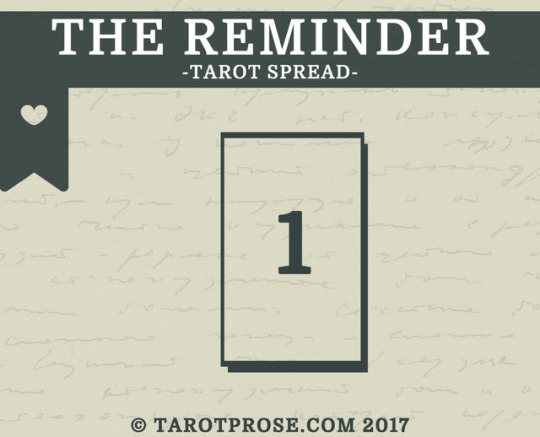
My depression has been taking over since school started last week. I’ve been dealing with a lot of highs and lows and I wanted to incorporate my Tarot practice into the mix. I wanted a Tarot spread to help me cope. Sometimes all I really need is a reminder that throughout the day I achieved something even if it is something small. This is how The Reminder Tarot spread came to be.
Position One: The Good
How did I do good Today?
This one card spread was created to remind me that I did my best and that that is enough. Sometimes my best is just getting out of bed, it could be making a small difference in someone else’s life, while other times it is answering a really long e-mail I’ve been putting off or going throughout my day managing my anxiety the best I could. No matter the reason, I wanted a Tarot spread that I could easily do and one that would provide me with some positive feedback on my day.
Post Notes:
Please do not remove the captions.
Spread: The Reminder Tarot Spread by @tarotprose
Copyright: © Ivan Ambrose 2017
Safe Space Tags: Depression, Anxiety, Self-Care
Spread Disclaimer: This is my own personal spread. I am not a medical professional, nor claim to be, nor do I suggest this spread to be used in replace of medical treatment. This is just what helps me and I wanted to share it with others.
Navigation: Table Of Contents | FAQ | Contact me
258 notes
·
View notes
Text
Four shells protection spell

Hellooo everyone! I did a lil something to celebrate summer since I’m finally officially on holiday! ♡
Materials:
• salt
•black pepper
•rose thorns (pins will work as well)
•sea water (you’ll need just a few drops)
•rosemary
•sage
•lavender
•seaglass
•basil
•4 candles (one for each element- I used blue for water, red for fire, black for earth and white for air.)
•marker
•4 sea shells (like these ☟)

☾1☽ Draw on the inside of the shells the symbols of the elements (one on each)

☾2☽ Light the candles, then place the herbs, salt and seaglass inside of each shell (the order does not matter). Sprinkle the sea water on the shells; while you do so visualize your goal, for example protecting your house from thunderstorms, from burglars… whatever you need

☾3☽ When you’re done, pour the wax of each candle on the corresponding shell to seal it.

☾4☽ Once the wax has cooled down, place the water seashell west, the air one east, the earth one north and the fire one south.
You can bury them in the garden or if you don’t have one you can bury them in small jars. You can also keep them on the floor or forniture inside your house! ♡
∼Blue
8K notes
·
View notes
Note
do you have any advice on how to write spells? I have a friend whose dad is really sick and my own family is having some money/car related troubles right now. I'm a new witch who is closeted and solitary and i have very few supplies (i.e. crystals, herbs etc.), but I'd like to try and help in anyway i can. i'd just like things to become less stressful and more hopeful for everyone.
Hi, Anon :) I’m really sorry to hear about your friends dad and your family troubles. I can totally empathize with your situation and I think that’s really wonderful that you want to help ♡ I’ve got a few resources that I hope will help you!
When I first started writing my own spells, I often would use a chart found in Grimoire for the Green Witch by Ann Moura to get started. If you’re interested in purchasing the book, here’s a link. Just be aware that it is Wicca based and she appropriates some terms that don’t belong to her (i.e. smudging). If you can get past that, there is a lot of great information for beginners!
Here’s the chart I was talking about if you’re not able to access the book:
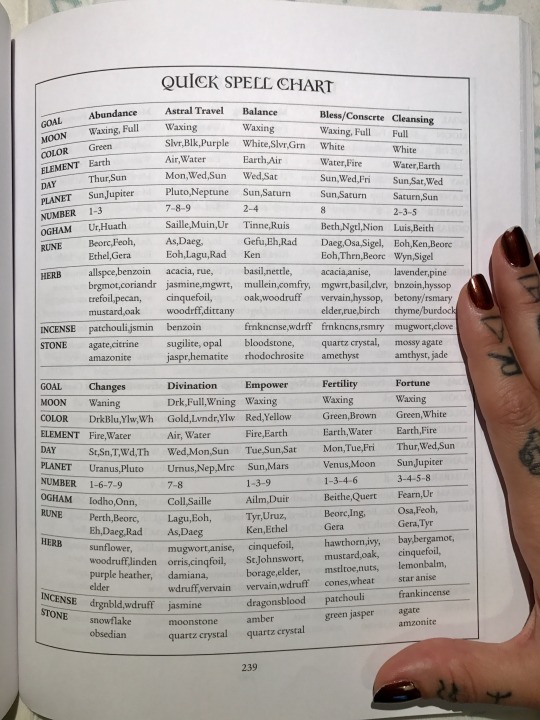


These charts are not the end all be all for spell writing by any means, but I found them very useful when I was starting out and didn’t know much about correspondences.
The other two resources I still use quite a bit are both online. Pinecone.Pub is awesome because you can just type your intent into a box and it will give you a list of herbs that are associated with said intent. It’s such a valuable tool for spell writing in my opinion.
Then there is Witchipedia, another great resource for research and spell writing. It’s a giant encyclopedia of witchcraft and the occult. Give it a look and I’m sure you’ll find something useful :)
I really hope this helps! Good luck, Dear!! ♡
327 notes
·
View notes